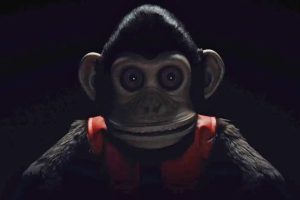June 27 () –
An in-depth analysis of the fossil record has revealed the Cretaceous origin of placental mammals, the group that includes humans, dogs, and bats, and has shown that coexisted with dinosaurs for a brief period of time before they became extinct, according to what the researchers publish in the journal ‘Current Biology’.
The catastrophic destruction caused by the impact of an asteroid on Earth caused the death of all non-avian dinosaurs in an event called the Cretaceous-Paleogene (K-Pg) mass extinction.
Researchers have long debated whether placental mammals were present alongside the dinosaurs before the mass extinction, or whether they only evolved after the dinosaurs’ demise.
Fossils of placental mammals are only found in rocks less than 66 million years old, which is when the asteroid hit Earth, suggesting that the group evolved after the mass extinction. Howevermolecular data has long suggested an older age for placental mammals.
The study, conducted by a team of paleobiologists from the University of Bristol (UK) and the University of Friborg (Switzerland), used a statistical analysis of the fossil record to determine that placental mammals originated before the mass extinction, meaning They coexisted with the dinosaurs for a short period of time.
However, It was not until after the asteroid impact that modern lineages of placental mammals began to evolve, suggesting that they could have diversified better after the dinosaurs were gone.
The researchers collected extensive fossil data from placental mammal groups dating back to the mass extinction of 66 million years ago.
“We collected thousands of fossil placental mammals and were able to see the origin and extinction patterns of the various groups,” said Emily Carlisle, from Bristol’s School of Earth Sciences, lead author of the study. Based on this, we were able to estimate when placental mammals evolved“.
Co-author Daniele Silvestro, from the University of Freiburg, explains that “the model used calculates ages of origin based on when lineages first appear in the fossil record and on the pattern of species diversity over time.” time for lineage You can also estimate extinction ages based on the last occurrences when the group goes extinct“, Add.
Co-author Professor Phil Donoghue, also from Bristol, notes that “by examining both origins and extinctions, we can more clearly see the impact of events such as the K-Pg mass extinction or the Paleocene-Eocene Thermal Maximum (PETM).” “.
Primates, the group that includes the human lineage, as well as Lagomorpha (rabbits and hares) and Carnivora (dogs and cats) were shown to have evolved just before the K-Pg mass extinction, meaning their ancestors mixed with the dinosaurs. After surviving the asteroid impact, placental mammals diversified rapidly, perhaps spurred on by the loss of competition from the dinosaurs.







![[Img #74131]](https://thelatestnews.world/wp-content/uploads/2024/10/They-discover-the-origin-of-most-meteorites-150x150.jpg)



![[Img #74131]](https://thelatestnews.world/wp-content/uploads/2024/10/They-discover-the-origin-of-most-meteorites-300x200.jpg)
